Subscribe to my Youtube channel at http://www.youtube.com/@revdrsusan.
Tag Archives: The Intrafaith Conversation
Pluralism 101
Subscribe to my Youtube channel at http://www.youtube.com/@revdrsusan.

Spiritual Fluidity

I was very interested when I learned that the book club of my area’s interfaith organization was reading When One Religion Isn’t Enough: the Lives of Spiritually Fluid People by Duane R. Bidwell. I hadn’t heard of this book, even though it was published in 2018. But I was intrigued because in my book, The INTRAfaith Conversation, I have a chapter entitled “New Voices.” And one of those voices is “Hybrid Spirituality: Multiple Belonging.” In it I quoted Francis X. Clooney, SJ:
The phenomenon of “multiple religious belonging” is now deeply engrained in American culture. We can no longer imagine simply the prospect of well-established religions and their members deciding whether to dialogue or not. People, younger people in particular, find themselves in the position of having multiple religious attractions, and experiences and commitments which cannot easily be fit into any given religious system.
For such people, it is unlikely that even upon ecclesial insistence they could give up strands of identity not easily reducible to a single tradition or church.
This obviously has huge implications for the church in the 21st century and we would be wise to pay attention to it.
I did learn (or relearn)some things from Bidwell’s book, beyond enjoying the stories he told of people living out their hybrid spirituality and resonating with his experience as an ordained pastor navigating the ecclesiastical institution as a hybrid.
First, was his statement “I do not believe that God is one or that all paths reach the same mountain.” This reminded me of Stephen Prothero’s book God Is Not One: the eight rival religions that run the world– and why their differences matter. I squirm when I hear interfaith friendly people declaring that “it’s all the same God” and “we’re all clinging the same mountain on different paths.” Even at a session of the Parliament of the World’s Religions, I was surprised when a speaker declared that we all worshipped the same God – especially when we’re also including people of no faith.
But I realized that I have preached about the one-ness of the Divine myself. A few weeks ago, when John’s gospel’s Jesus prayed “that we might all be one,” I played the music video “One” by Billy Jonas. It’s really a very cool video, but now I can see the problem in some of the lyrics.
One plus one
Plus one plus one
Makes ONE
One likes Jesus
One likes Judah
Yogananda, Allah, Goddess,
the Buddha!
Says ‘wait how do you pick a path?’
Solution: NEW new math
One plus one
Plus one plus one
Makes ONE
ONE-der where its leading to.
One-derful, wondrous thing
One way – the way we’re going.
One plus one
Plus one plus one
Makes ONE
It might not make a big difference when watching a video, but it’s something to think about.
The second thing I found interesting was Bidwell’s section called “Names Matter.” It reminded me of the explanation in my book of the dilemma of what to call the interfaith movement:
There is much ongoing discussion about what to call the movement. The Rev. Dr. Andrew Kille, executive director of the Silicon Valley Interreligious Council (SiVIC) writes that “interfaith carries some muddy implications that can be confusing – ‘interfaith’ organizations in the past meant ‘ecumenical’- all Christian, or, at best, Christian/ Jewish. It has also come to describe traditions that blend two or more religious observances into some whole. We chose ‘interreligious’ partly because the term is less familiar, partly because it suggests relationships between distinct traditions, rather than a blending of them. Multi-faith has much the same kind of sense about it. ‘Interreligious’ is also a term that hopes to include traditions for whom ‘faith’ is not really a meaningful concept- Buddhists, Wiccans, etc.”
Interfaith? Multi-faith? Interreligious? Multi religious? Pan-spiritual? Religio-pluralistic?
For the purpose of this book, I will usually use ‘interfaith.’
Now, Bidwell has added multiple religious belonging, dual religious practice, religious hybridity, to the list of problematic names and the challenge they entail. He chooses instead to use spiritual fluidity, religious multiplicity, and multiple (or complex) religious bonds.
For those of us who care about such things, it just goes to show the ongoing complexity of our religious/spiritual landscape.
And for those who don’t, there’s always
One plus one
Plus one plus one
Makes ONE
And maybe that’s OK.


INTRAfaith at the Parliament of the World’s Religions
It’s been a long time since I’ve posted here. When last we met in January 2020, I was organizing a screening of Same God, the story of the Wheaton College professor who was removed from her tenured position because of her “embodied solidarity” with Muslims.
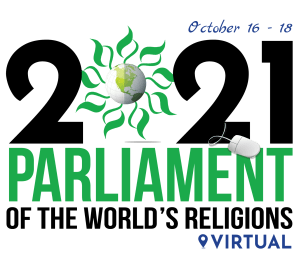
But then . . . well, 2020 happened. And it felt like a whole lot of other issues took center stage. I pretty much decided to give up on promoting my book, blog, etc. When I got the notice that the Parliament of the World’s Religion would be on line this year and was soliciting proposals for workshops at this years online gathering, I decided to give it a pass.
But, as is the way of the universe, something happened. I received two emails. The first was from members of FEZANA, a coordinating organization for Zoroastrian Associations of North America. They planned to propose a panel discussion on the need for Interfaith organizations to become incubators for intrafaith dialogue. They had somehow found me on the Internet and wondered if I would be interested. Of course, I was interested! That proposal was accepted and plans have begun for our presentation on “Tweaking the Interfaith model: Interfaith Organizations as Incubators for Intrafaith Dialogue.” More details will come as our planning proceeds.

The second email was from a retired Lutheran pastor in St.Paul, MN who had found my interview with Steve Kindle on Pastor to Pew about how to deal with John 14: 6: “I am the way, and the truth, and the life. No one comes to the Father except through me,” which John attributed to Jesus. Listen to that podcast here.
Rev. John Matthews had begun an initiative called the 14:6 Project. He says, “The exclusivity of this verse, while ‘understandable’ in its late-first-century historical context, hinders authentic dialogue with other faith traditions. The mission of the 14:6 Project is to focus on this verse of New Testament scripture that is so problematic for Christian involvement in interfaith settings.
He comes to these conclusions from a long career in this area. He was a founding member of the Evangelical Lutheran Church in America (ELCA) Consultative Panel for Lutheran-Jewish Relation (1990-2000), chaired the Region III (ELCA) Task Force for Jewish-Christian Relations (1990-2005), and served on the program advisory committee of the Jay Phillips Center for Interfaith Learning at the University of St. Thomas in St. Paul (2004-2008). While on the ELCA Consultative Panel, Pastor Matthews assisted in drafting the “Declaration of the Evangelical Lutheran Church in America to the Jewish Community” (1994) which is now a part of the permanent display on anti-Semitism at the United States Holocaust Memorial Museum in Washington, DC.
Our workshop will be “A Deep Dive into One Barrier to Christian Interfaith Relations: Introducing ‘The John 14:6 Project.'” Our hope is to find others who want to continue the work of re-imagining this verse. We believe that If interfaith relationships are to thrive, each tradition must work on its own intra-faith issues. John 14:6 is Christianity’s intra-faith challenge.
So I’m back in. In fact, a third proposal, “Dismantling Patriarchy in the World’s Religions” was also accepted – but that’s the subject of another post. My commitment to the intra-faith conversation continues!
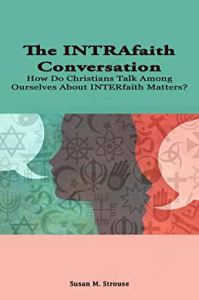

You Might Be a Christian Atheist If . . .
 New Voices . . .
New Voices . . .
is a chapter in my book, The INTRAfaith Conversation, in which I describe some of the groups now included in the interfaith scene.
These groups include . . .
Atheists and Humanists
Since the book was published in 2015, there have been a lot of new developments. I was aware of the wide range of definitions for atheists and humanists when I wrote the book. Since then, I’ve been fascinated by the further exploration, expansion, and definition of these terms. I’m not much interested in the fundamentalist atheists, who are just as dogmatic as the religionists they criticize. But I am drawn to those who are exploring the boundaries of who and what God (or Being or Presence or no word at all) is.
Probably the most public lately has been Gretta Vosper, the self-professed Atheist who is a pastor in the United Church of Canada (I wrote about her in Should the Atheist Pastor Be Defrocked?). In 1997, four years into her call to West Hill United Church in Scarborough, Ontario, she preached a sermon called “Deconstructing God.” At that point, she defined herself in a more “not this” manner, declaring that she did not believe in a theistic God. Then in 2013, she moved from non-theism to atheism after she read about the plight of Pakistani bloggers who faced punishment as blasphemers for questioning the existence of God. For her (according to her website), “god is a metaphor for goodness and love lived out with compassion and justice, no more and no less.”
In 2017, I met Carrah Quigley when we presented a workshop together at the Parliament of the World’s Religions in Toronto. Carrah identifies as a Spiritual Humanist. According to the Church of Spiritual Humanism, this is a “religion based on the ability of human beings to solve the problems of society using logic and science . . . using scientific inquiry we can define the inspirational, singular spark inherent in all living creatures.” Spiritual Humanism is natural, not supernatural.
 Atheists for Jesus?
Atheists for Jesus?
Then, just this month I came across the category of Jesus-following Atheists (also known as Christian Atheists) in an article entitled Inter-faith Dialogue with Christian Atheists.
Hmm. Intriguing.
From what I’ve read, it seems that the main focus of Christian Atheism is the life of the historical Jesus and the system of ethics drawn from his teachings. Although, regarding the subject of God, there is some divergence. While some do reject the idea of God altogether, others dismiss the belief in a supernatural, interventionist God. According to the author of What Does It Mean to Be a Christian Atheist?, “I still believe in ‘God.’ What I do not accept is belief in a theistic deity, a ‘being’ that created the universe, holds the universe together, or exists in or apart from the universe.”
Of course, Bishop John Shelby Spong has written and spoken much about the death of theism, and I greatly appreciate his insights about coming to reject the belief in a supernatural power. I don’t think he calls himself an a-theist; he’s more inclined to dismiss as inadequate these words for our experiences of the Divine. The experience is what is important. In this sense, I have no qualms about calling myself an a-theist. Especially since he doesn’t reject the reality of mystical experiences of the Holy, as do some who adhere only to the ethical teachings of Jesus.
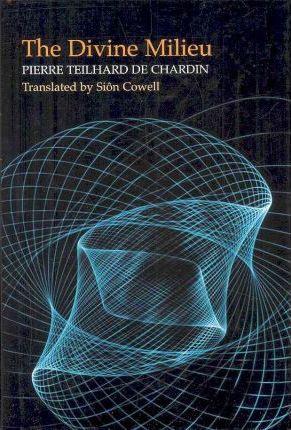
However, at the end of the day, I still resonate most with Teilhard de Chardin’s panentheism, in which all creation exists within a ‘divine milieu.’
Still, I am intrigued by the ongoing exploration of what we mean when we think about God (the Divine, Spirit, or no name at all). The freedom to go outside the bounds of our traditional (and limited) understandings enhances not only our own spiritual/ethical life, but our communal life as well.
The interfaith world benefits from the presence of those who do not fit the definition of “religion.” The intrafaith scene can benefit as well, if we get past our prejudices (especially when we don’t know the broad range of these groups) and listen to their stories.

“I am the way and the truth and the life” at Churchwide Assembly
 This past week, my denomination, the Evangelical Lutheran Church in America (ELCA), held its triennial Churchwide Assembly. One of the main events was voting on the proposed policy statement: A Declaration of Inter-Religious Commitment. I’m proud to say that it passed 890-23.
This past week, my denomination, the Evangelical Lutheran Church in America (ELCA), held its triennial Churchwide Assembly. One of the main events was voting on the proposed policy statement: A Declaration of Inter-Religious Commitment. I’m proud to say that it passed 890-23.
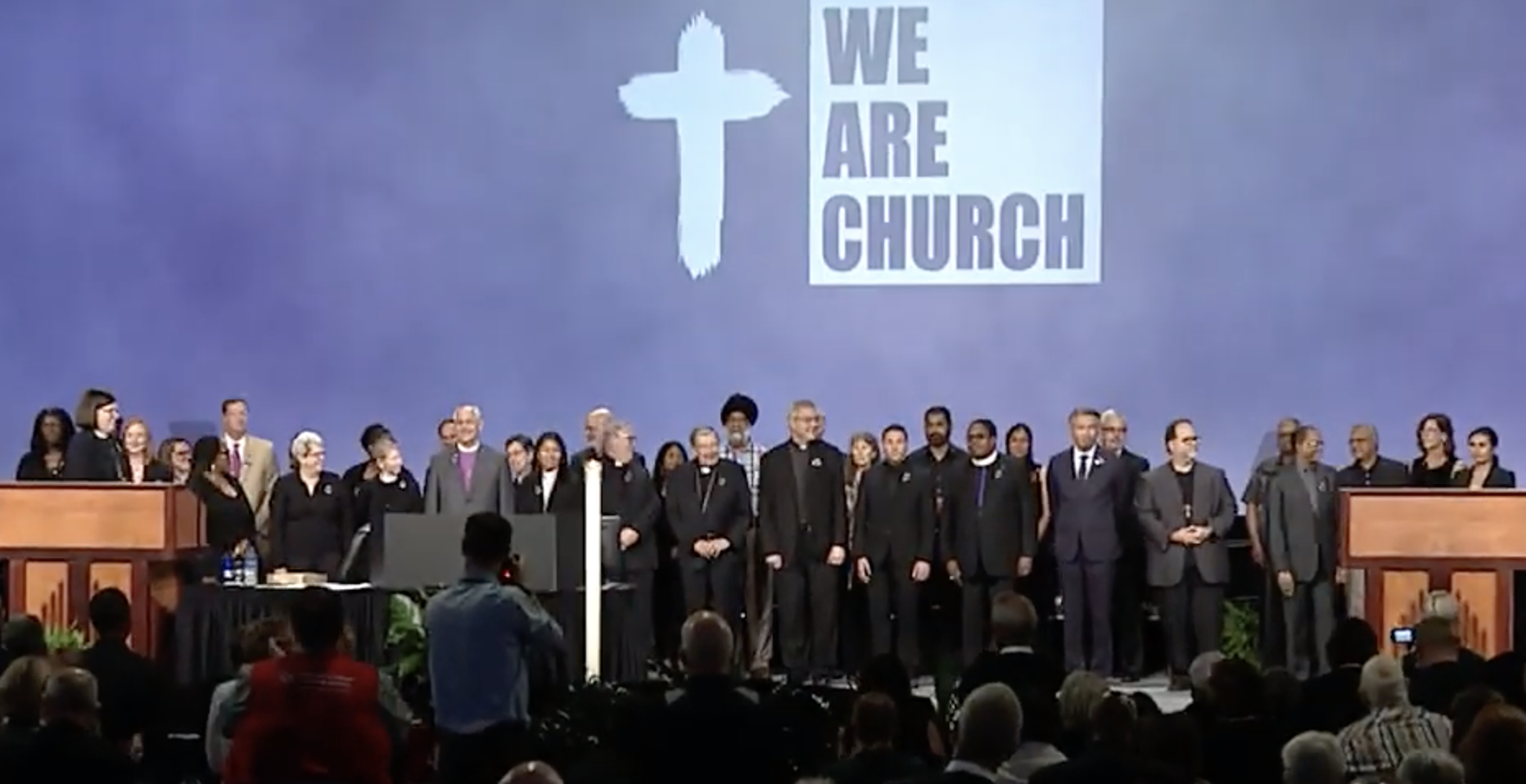
That might have been due to the fabulous array of ecumenical and inter-religious guests!
There was, however, one moment of concern from the intrafaith perspective. An amendment had been submitted calling a section of the policy statement “inconsistent with Scripture,” which proposed striking some of the language of the statement under the heading “Limits on our knowing” (lines 630-655). The author of the motion based his challenge on our old friend John 14:6, “I am the way and the truth and the life. No one comes to the Father except through me.”
 In the amendment he wrote: “We have a clear statement from Jesus, who is fully God and fully man. We do therefore have a basis to know God’s views on religions that do not require faith in Jesus Christ as God’s son.”
In the amendment he wrote: “We have a clear statement from Jesus, who is fully God and fully man. We do therefore have a basis to know God’s views on religions that do not require faith in Jesus Christ as God’s son.”
Speaking from the floor, he added: “I am here to speak truth to power, even if it is an inconvenient truth. I would urge this assembly to repudiate and repent of any false teachings.”
The only other person who came to a microphone stated, “I’m embarrassed that we’re having this conversation in front of our interfaith guests.”
The motion to amend was overwhelmingly defeated and the policy statement was adopted.
Now, don’t get me wrong. I am delighted that this policy statement has been adopted. But I’m also disappointed that this very appropriate question was not adequately addressed. To be fair, I doubt that it could have been adequately addressed in the context of the amendment’s discussion time. And I have to wonder how many other voting members had similar questions but not the courage of this one lone amendment-maker. Having the discussion with all the interfaith guests standing right there on the stage might not have been an embarrassment, but it sure might have been a deterrent.
As I have said innumerable times, the “What about when Jesus said . . .” question has come up in virtually every interfaith workshop I’ve ever led with Christians.
Here is an audio version of the interview I did on Pastor to Pew a few years ago. We talk about my book, The INTRAfaith Conversation. But mostly it’s my take on John 14: 6 and how taking the intrafaith question seriously is a necessity for today’s church. 
Presiding Bishop Eaton said (in reference to our ecumenical relations) that “ecumenism is not an add-on, but a central part of what it means when we say we are church.” I know even that’s a stretch for many congregations, but I wish that our inter-religious relations could also be central to what it means to be church.
But if we do take interfaith seriously,
we’re going to have to also take intrafaith seriously.
Thankfully, there’s a resource for this! (Shameless self-promotion warning)

“. . . meeting and respecting a person of another religion confronts us all with the question raised by Marjorie Suchoki in Divinity and Diversity:
Our Christian past has traditionally taught us that there is only one way to God, and that is through Christ. But we are uneasy. Our neighborliness teaches us that these others are good and decent people, good neighbors, or loved family members! Surely God is with them as well as with us. Our hearts reach out, but our intellectual understanding draws back. We have been given little theological foundation for affirming these others – and consequently we wonder if our feelings of acceptance are perhaps against the will of God, who has uniquely revealed to us just what is required for salvation.
“As pastors and lay leaders we are responsible to our congregations to provide the theological foundation for affirming ‘these others.’ Rather than succumbing to what John Cobb calls ‘the danger that sensitive Christians will simply delete central beliefs rather than transform them,’ I believe that we have some serious theological and Christological work to do in defining, or perhaps re-defining, ourselves in light of our interfaith milieu.” (The INTRAfaith Conversation, Introduction)
I really hope we take up the challenge to build relationships with our inter-religious siblings. I also really hope that we’ll also take up the challenge to engage folks like the writer of the amendment. That’s not an add-on either, but should be part of what it means when we say we are church.
then intrareligious dialogue must accompany it.
– Raimon Panikkar
What to Do with “I am the Way, the Truth, and the Life”?

In virtually every workshop I’ve ever led about interfaith matters, someone asks the question: “What about when Jesus said, ‘I am the Way, the Truth, and the Life. No one comes to the Father except through me?”
Here is an audio version of the interview I did with Steve Kindle of Pastor to Pew a few years ago. We talk about my book, The INTRAfaith Conversation. But mostly it’s my take on John 14: 6 and how taking the intrafaith question seriously is a necessity for today’s church.
You can also see the video here.
Muslims and Christians Worship the Same God: the Pope Said So!
 1219 CE: St. Francis and the Sultan
1219 CE: St. Francis and the Sultan
This year marks an important date in interfaith history. Eight-hundred years ago, as Christians and Muslims were in the midst of fighting the fifth crusade/jihad, St. Francis of Assisi had a remarkable visit with Sultan al-Malik al-Kamil of Egypt. You can read more about that historic event here.
What I really want to talk about is another, much more recent, historic meeting. Last month, Pope Francis visited Abu Dhabi, capital of the United Arab Emirates, and met with Sheik Ahmad el-Tayeb, the Grand Imam of Egypt’s Al-Azhar mosque. What transpired is just as momentous as the meeting of St. Francis and the Sultan.
2019 CE: The Pope and the Imam
On February 4, Pope Francis and Sheik el-Tayeb signed a document on improving Christian-Muslim relations called “Human Fraternity for World Peace and Living Together”.  It begins:
It begins:
In the name of God who has created all human beings equal in rights, duties and dignity, and who has called them to live together as brothers and sisters, to fill the earth and make known the values of goodness, love and peace . . .
By beginning this way, the document (hopefully) puts to rest the idea that we do not worship the same Deity, whether we call that Deity God, Allah, Ground of our Being, or Nameless One.
The really stunning part comes two-thirds of the way down. Tucked into a list of convictions essential for upholding the role of religions in the construction of world peace, is this statement:
The pluralism and the diversity of religions, colour, sex, race and language are willed by God in His wisdom, through which He created human beings.
(I know. I have to temporarily suspend all of my convictions about exclusively male language for God. But the implications of the statement are too big to ignore.)
It’s Been Done Before
While potentially provocative, it’s not the first time the Catholic Church has made such a declaration. In 1965, the Second Vatican Council approved Nostra Aetate: Declaration on the Relation of the Church to Non-Christian Religions. Regarding Islam, it said:
The church also regards with esteem the Muslims. They adore the one God, living and subsisting in himself, merciful and all-powerful, the Creator of heaven and earth.
 Remember the brouhaha at Wheaton College a few years ago when one the professors was fired for wearing a hijab in solidarity with Muslims? It was also about quoting the Pope: “As Pope Francis stated last week, we worship the same God.” Her reference was to: Meeting with the Muslim Community at the Central Mosque of Koudoukou, Bangui (Central African Republic) on November 30, 2015.
Remember the brouhaha at Wheaton College a few years ago when one the professors was fired for wearing a hijab in solidarity with Muslims? It was also about quoting the Pope: “As Pope Francis stated last week, we worship the same God.” Her reference was to: Meeting with the Muslim Community at the Central Mosque of Koudoukou, Bangui (Central African Republic) on November 30, 2015.
Pushback!
There has been criticism of these pronouncements. In 2000, then-Cardinal Joseph Ratzinger issued a warning about the danger of “relativistic theories which seek to justify religious pluralism.” In “Dominus Iesus,” the future Pope Benedict XVI said
This truth of faith (that Christ is the salvation of all humanity) does not lessen the sincere respect which the Church has for the religions of the world, but at the same time, it rules out, in a radical way, that mentality of indifferentism “characterized by a religious relativism which leads to the belief that ‘one religion is as good as another.
Of course, the Protestants also got into the act. Hank Hanegraaff, known as the “Bible Answer Man” on his radio show has said that “the Allah of Islam” is “definitely not the God of the Bible.” And the evangelical Christian Apologetics and Research Ministry unequivocally states that Christians and Muslims do not adore the same God, and that the Catholic Church has “a faulty understanding of the God of Islam.”
Now granted, these are positions from the Catholic Church and evangelical Christianity. I have problems with both sides on issues other than this one. But I applaud the efforts of Pope Francis to further our interfaith awareness and acceptance.
What Does Progressive Christianity Say?
As a progressive Christian, I agree with the second point of The 8 Points of Progressive Christianity:
 By calling ourselves progressive Christians, we mean we are Christians who affirm that the teachings of Jesus provide but one of many ways to experience the Sacredness and Oneness of life, and that we can draw from diverse sources of wisdom in our spiritual journey.
By calling ourselves progressive Christians, we mean we are Christians who affirm that the teachings of Jesus provide but one of many ways to experience the Sacredness and Oneness of life, and that we can draw from diverse sources of wisdom in our spiritual journey.
The INTRAfaith Conversation
Agreeing to this statement, though, doesn’t mean I don’t recognize the dilemma that exists within these statements, pro and con. I give Cardinal Ratzinger just a tiny bit of credit because he attempted to engage the elephant in the living room: what about Jesus? I don’t agree where he comes down, but he did engage the question. Pope Francis and Sultan al-Malik al-Kami didn’t get into knotty questions, such as the divinity of Jesus or the Trinity.
They were all about peacemaking – and props to them for that!
 It is left to us to wrestle with our inherited Christologies (as well as doctrines, creeds, liuturgies, hymns, prayers, etc.) in light of our desire to live in peace and harmony with our religious neighbors. As Kristin Johnston Largen wrote in Finding God Among Our Neighbors, “. . .issues of Christology cannot be avoided in an interreligious conversation that professes to take Christian faith claims seriously.” In other words, who/what is Jesus in an interreligious context?
It is left to us to wrestle with our inherited Christologies (as well as doctrines, creeds, liuturgies, hymns, prayers, etc.) in light of our desire to live in peace and harmony with our religious neighbors. As Kristin Johnston Largen wrote in Finding God Among Our Neighbors, “. . .issues of Christology cannot be avoided in an interreligious conversation that professes to take Christian faith claims seriously.” In other words, who/what is Jesus in an interreligious context?
Such wrestling is what I attempt to facilitate in my book, The INTRAfaith Conversation: How Do Christians Talk Among Ourselves About INTERfaith Matters?
Pope Francis and the Imam have given us a lot to think about.
Let’s talk!

The INTRAfaith Conversation in Islam
“The Shoe Is On the Other Foot: Pluralism and the Qur’an” is a terrific article by Professor Jane Smith from Harvard Divinity School. She raises the question of whether or not Islam itself can find a way to live out the pluralism that many are persuaded is at the heart of the Qur’an’s message. She writes:
It seems to me that the future of Islam, at least as I understand it in the American context, has much to do with the way that Muslims figure out how they are going to position themselves on the question of pluralism. That we all live in a religiously differentiated society is a given. But is that a good thing in the Muslim perspective? While Muslims struggle to be truly accepted by Christians, Jews, and other groups in America, can they promise the same in return? And if so, at what level?
This is the crux of the intrafaith conversation within Islam. Mostly the same kind of questions as within Christianity. The content of the issues is different but the process is essentially the same.
You can read the whole article here.

Do Muslims and Christians Worship the Same God: More from Wheaton College
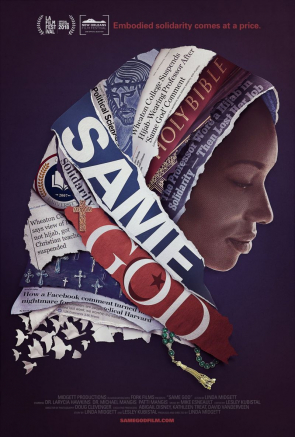 A new documentary asks the question: Do Muslims and Christians worship the same God?
A new documentary asks the question: Do Muslims and Christians worship the same God?
Same God, which will be screened at the Los Angeles Film Festival later this month, is based on the story of Professor Larycia Hawkins and her experience at an evangelical Christian college. You can see a trailer for the film here.
I’ve been interested in this story since it broke in December 2015, when Professor Hawkins, the first female African-American tenured professor at Wheaton College, announced her intention to wear a hijab during Advent in solidarity with Muslims.
But it wasn’t just this announcement that put her in the Wheaton crosshairs; it was a Facebook post in which she said that Christians and Muslims worship the same God. This caused administrators to question whether Hawkins had violated the school’s statement of faith. They put her on paid leave, and on January 5, issued a Notice of Recommendation to Initiate Termination-for-Cause Proceedings. That’s when I posted about it on this blog, calling it a classic example of our need for an intrafaith conversation: Wheaton College: an Intra-faith Controversy
Intrafaith Controversy Redux
In October, 2016, the New York Times Magazine published an article entitled “The Professor Wore a Hijab in Solidarity – Then Lost Her Job” and I wrote an update to my blog. My contention was – and still is – that it’s a perfect example of the necessity of intrafaith discussions among Christians of differing theological perspectives. I wrote:
Dr. Hawkins identifies as a Christian. Her Christianity allows her to make the statement she made by wearing the hijab. The administration and many alumni of Wheaton College have a different interpretation of Christianity. Rather than dismissing this popular, well-qualified educator, would it not have been wiser to use the controversy as an opportunity for an intrafaith conversation?
The Story Continues . . .
Linda Midgett, director of Same God and a graduate of Wheaton College, admits that she didn’t think much of the situation at the time. But when she realized the uproar among students, alumni, and within the larger evangelical community, she said:
didn’t think much of the situation at the time. But when she realized the uproar among students, alumni, and within the larger evangelical community, she said:
A rift quickly formed. On one side were those, like me, who felt her gesture was unmistakably Christian in nature. On the other side were those who felt she was guilty of heresy, and deserved to be terminated.
As the controversy continued, Midgett began to ask,
Do evangelicals worship the same God? It’s the question that led me to direct this film, and one I continue to ask as evangelicals split over Donald Trump.
. . . Into Politics
I believe that Linda Midgett is right; this question is a key part of how Christians do politics. Watch the movie trailer and tell me you don’t agree. Ironically, Wheaton has now launched a scholarship in Hawkins’ name which is designed for students pursuing summer internships in peace and conflict studies. But even this – as an article in The Christian Post reflects – has only fueled the controversy.
Wouldn’t it be wise of us – as we strive to rediscover our capacity for civil discourse in the political arena – take on the elephant in our own Christian living room? The Intrafaith Conversation is not a frivolous enterprise. It endeavors to help us get past our differences (without denying them) in order to find common ground.
Maybe this film will be a good discussion starter.
